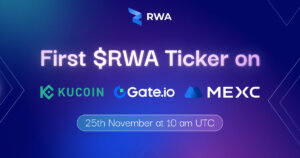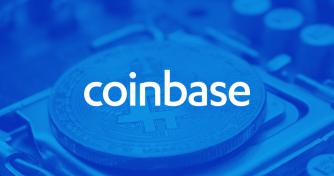 Fee Analysis for Coinbase’s New Crypto-to-Crypto Conversions
Fee Analysis for Coinbase’s New Crypto-to-Crypto Conversions Fee Analysis for Coinbase’s New Crypto-to-Crypto Conversions

Cover art/illustration via CryptoSlate. Image includes combined content which may include AI-generated content.
Coinbase recently announced the rollout of a new feature allowing users to directly place coin-to-coin trades rather than going through an intermediary fiat step. However, is it more cost-effective to make direct exchanges?
Previous Setup
Previously, if a Coinbase customer wanted to purchase Bitcoin using Ethereum, they’d have to first sell their Ether holdings for USD, and then purchase Litecoin in a second transaction. These two-part transactions are slower, which matters in a market as volatile as crypto. As said by Coinbase:
“[By] focusing on ease of use, and designing for simplicity, we’ve tried to make crypto more accessible to everyone. This latest feature that allows customers to convert from one crypto directly into another.”
The company listed the following coins available for direct trades on the Coinbase blog:
“Customers can convert between Bitcoin (BTC) and Ethereum (ETH), Ethereum Classic (ETC), Litecoin (LTC), 0x (ZRX), or Bitcoin Cash (BCH). Converting is available on Coinbase.com and in the iOS and Android apps. Conversions complete instantly and at a lower cost than if done via two separate transactions.”
However, it’s not necessarily true that the fees are actually lower.
Fee Analysis
Coinbase charges some of the highest fees of any of the major exchanges, with a standard buy incurring a 1.49 percent fee. This is in addition to a spread fee of around 0.50 to 1.00 percent, for a total of 1.99 to 2.49 percent for each transaction.
Instant buys with a credit card are even worse, incurring a 3.99 percent fee for the transaction alone. In comparison, major exchanges such as Bittrex, Kraken, and Binance only charge between 0.25 and 0.10 percent per trade.
If crypto-enthusiasts are able to use these more advanced exchanges then they can save a substantial amount in fees, especially for larger purchases.
Spread Analysis
The spread on a transaction is the difference between the bid and the ask price. When someone makes a market order, they need to pay the spread (premium) to get the transaction filled immediately.
Normally, Coinbase normally charges a 0.50 percent spread on purchases and sales, or a flat fee ranging between $0.99 to $2.99, whichever is greater. For digital currency conversions (a direct exchange) Coinbase charges a 1.00 percent fee.
Interesting enough, it’s ever so slightly cheaper to conduct two separate transactions for trades over $600. An illustration with $1,000:
$1,000 Litecoin converted to fiat at 0.50 percent incurs a $5 fee. $995 to Ethereum incurs a $4.975 fee, netting $990.025 worth of Ether. In aggregate, the fee amounts to 0.9975 percent.
$1,000 Litecoin converted directly to Ethereum, with a 1.00 percent spread fee, incurs a $10 fee, netting $990 Ether. The different is $0.025, or two and a half cents. Although that may not sound like a lot, if a customer is purchasing large amounts through Coinbase that is a 25 basis-point difference.
And, it’s likely Coinbase makes money on this high spread, especially for more liquid coins such as Bitcoin and Ethereum. On coins with large market capitalization and high trading volumes, the spread is usually only 5-20 one-hundredths of a percent, compared to Coinbase’s fee of half a percent.
However, there could be other benefits to a direct exchange. For example, the added expediency may subject the user to less volatility during the time it takes the user to conduct to separate transactions.
Country Availability
Coinbase plans to make coin-to-coin conversions available in thirty-four countries with “native payment access.” The procedure will allow Coinbase to gather additional feedback and tweak the service accordingly.
A Better Solution
The best solution to reducing fees and maximizing returns is to open a Coinbase Pro account. Though the charts and information can be overwhelming, learning the application is worth it.
On Coinbase Pro—makers, or those placing limit orders (buys or sells of a crypto at a specific price)—are not charged any fees. Meanwhile, takers—those placing a market order at the going market price—are charged a modest 0.25 percent fee.
Both maker and taker fees on Coinbase Pro are substantially lower than those on Coinbase’s retail platform. Moreover, Pro is available in the US, Europe, UK, Canada, Australia, and Singapore.
Coinbase Rapidly Adding Features
The addition of direct exchanges come after a slew of new functionality. For retail customers, Coinbase recently added zero-fee PayPal withdrawals. For more sophisticated traders, the company added an OTC trading desk alongside a number of different altcoins.
Coinbase is poised to secure the the United State’s retail crypto market. Yet, the new set of features may allow the platform to compete internationally with other exchanges such as Binance and BitMex.



 Farside Investors
Farside Investors 


 CoinGlass
CoinGlass 




































































































